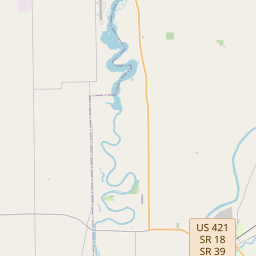Civil War Memorial - Carroll County Indiana
Historical marker location:






In Memory of Her Soldiers and Sailors
April 12, 1861: The Civil War begins with the Confederate attack on Fort Sumter, located in South Carolina's Charleston Harbor.
April 15, 1861: President Abraham Lincoln issues a call for 75,000 volunteers to serve in the Union Army to suppress the rebellion.
May 24, 1861: The first major land battle, known as the First Battle of Bull Run (or First Battle of Manassas), takes place in Virginia. It ends in Confederate victory.
September 17, 1862: The Battle of Antietam in Maryland becomes the bloodiest single-day battle in American history, with heavy casualties on both sides. The Union forces, commanded by General George McClellan, manage to halt Confederate General Robert E. Lee's advance into Union territory.
January 1, 1863: President Lincoln issues the Emancipation Proclamation, declaring that all slaves in Confederate-held territories are to be set free. However, the proclamation does not immediately free all slaves in the United States.
July 1-3, 1863: The Battle of Gettysburg in Pennsylvania takes place, resulting in a significant Union victory and inflicting heavy casualties on Confederate forces. It marks a turning point in the war.
November 19, 1863: President Lincoln delivers the Gettysburg Address, emphasizing the principles of liberty, equality, and the preservation of the Union.
April 9, 1865: General Robert E. Lee surrenders to Union General Ulysses S. Grant at Appomattox Court House in Virginia, effectively ending the Civil War.
April 14, 1865: President Lincoln is assassinated by John Wilkes Booth while attending a play at Ford's Theatre in Washington, D.C.
May 10, 1865: Confederate President Jefferson Davis is captured, signaling the collapse of the Confederate government.
December 6, 1865: The Thirteenth Amendment to the United States Constitution is ratified, officially abolishing slavery throughout the country.
While this timeline provides an overview of key events, it is important to note that the Civil War spanned over four years, from 1861 to 1865, and encompassed numerous battles, campaigns, and political developments that shaped the course of American history.
The notorious bank robber John Dillinger was born in Indiana in 1903. He gained national notoriety during the Great Depression for a string of daring bank robberies and was eventually shot and killed by law enforcement in 1934.
The first European settlers in Carroll County came in the early 1820s, drawn by the fertile land and the opportunity for new beginnings. The county's early economy was largely agrarian, with farming being the primary occupation. The Wabash and Erie Canal, completed in 1856, brought further economic growth and facilitated the transportation of goods and people.
Carroll County played a role in the American Civil War, with many of its residents enlisting in the Union Army. The county's close proximity to the Confederate-aligned state of Kentucky made it an important strategic location. Additionally, during this time, the county experienced a period of growth and development, with the establishment of new businesses and schools.
In the late 19th and 20th centuries, Carroll County continued to evolve and adapt. The growth of railroad networks and the discovery of natural gas and oil deposits brought new industries and prosperity. The county also saw advancements in education, healthcare, and infrastructure. Today, Carroll County has a strong sense of community and is known for its agricultural heritage, historic sites, and annual festivals that celebrate its vibrant past.
Carroll County Timeline
This timeline provides a glimpse into the major events and milestones that have shaped the history of Carroll County, Indiana.
- 1819 - Carroll County was established on November 1, named after Charles Carroll of Carrollton, a signer of the U.S. Declaration of Independence.
- 1828 - The county seat was established and named Delphi.
- 1830 - The Wabash and Erie Canal opened, stimulating economic growth in Carroll County.
- 1844 - The first courthouse was built in Delphi.
- 1861-1865 - Carroll County residents served in the American Civil War.
- 1873 - The present-day courthouse was completed.
- 1887 - The Lake Maxinkuckee and Manchester Railroad was built, connecting Carroll County to neighboring communities.
- 1930s - The Great Depression led to economic hardships in Carroll County.
- 1971 - The Carroll County Historical Society was established to preserve the history of the area.
- 1998 - The county celebrated its 175th anniversary.
- 2011 - Carroll County was heavily affected by an EF3 tornado that caused significant damage in the area.